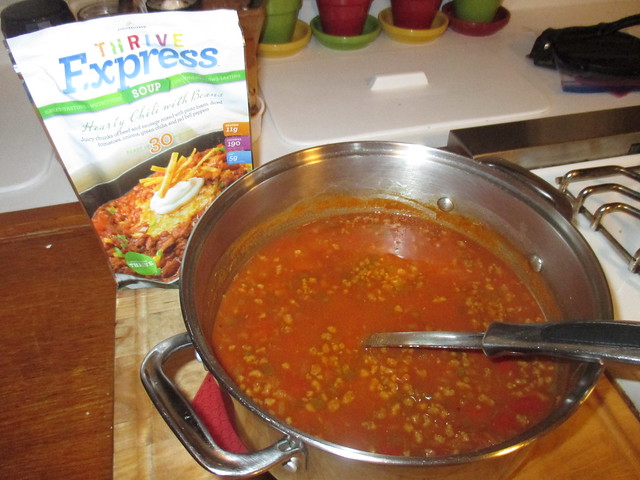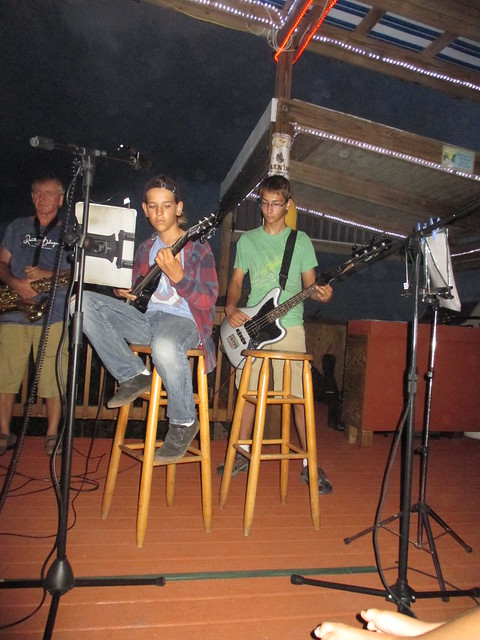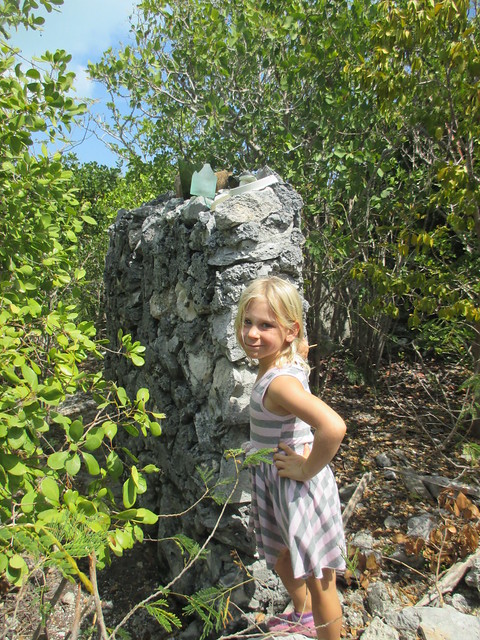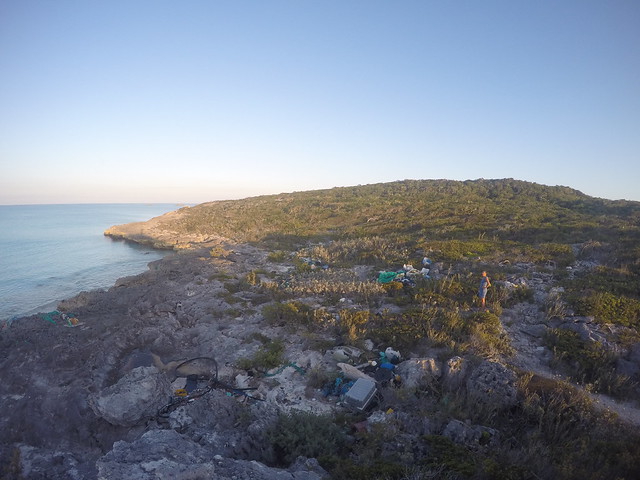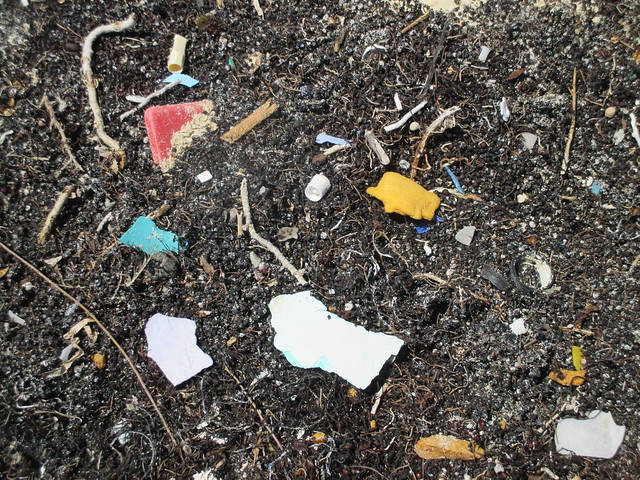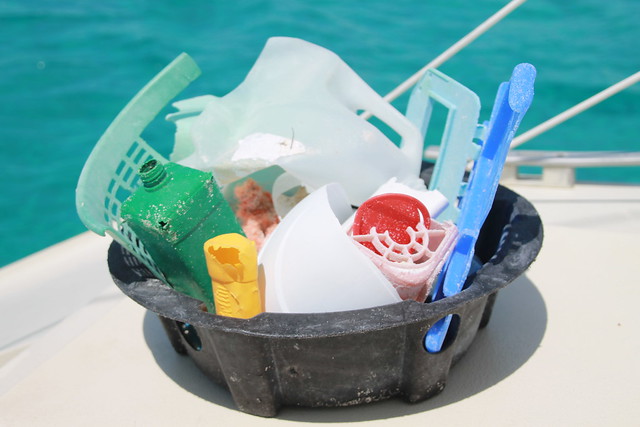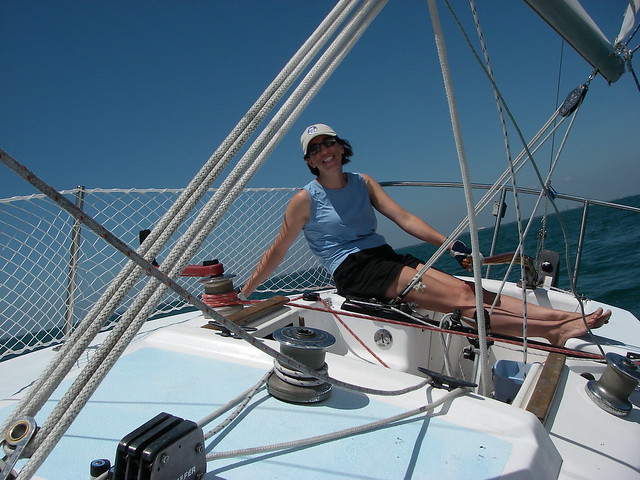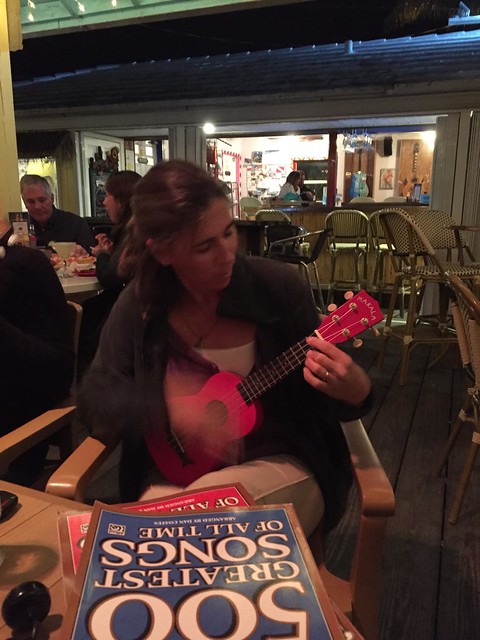We just spent a week at sea, offshore between the Exumas and Puerto Rico. We knew it was going to be at least a 5 day trip, and maybe as many as 8, so I tried to plan accordingly on my provisioning trip in George Town. Knowing what and how much we will need can be a bit tricky.
The first variable is what can be found in local shops. I planned ahead from the states and knew what I would and wouldn’t find in the Bahamas. I had several easy one-pot THRIVE instant meals which I was itching to try, and which were largely successful. Locally, we shopped too early to hit the mail-boat jackpot, but I was able to buy staples like milk, eggs and bread, and some treats for the crew like cheese and crackers, chips, ginger ale, and fresh fruit. A last-minute purchase that worked well was a case of Ramen noodles I found at a little wholesale place. Ramen noodles does not fit into any nutritional profile for our family, but it fits the bill for rough water—only 3 minute cook time.
The second variable is sea state: chances are if the seas are rough and I don’t feel like cooking, my crew will not feel like eating. That means having peanut butter crackers and granola bars on hand is critical. It also means making one-pot meals that are quick and easy. For a cook who makes everything from scratch, this is a tough one for me, but meals with long prep-times or a lot of clean-up mean standing in the galley when I’d rather be outside, so I compromise on long trips. I plan for at least one hot meal per day (more if I can swing it) and I also offer one consolation treat for each day—if the day was bad, there’s always a bright spot like a mini-snickers or a lemon-slush to lift morale. Depending on sea state, I may prepare more or less food, and I may have more leftovers than usual, which I store for the next day’s lunch.
The third variable is what can be prepared ahead of time. One of my first boat-mom friends, Vicki, taught me to do a lot of prep whenever you go on a longer trip and keep snacks and drinks ready in a cooler in the cockpit. That was good advice. For this trip, I baked bread, made a double portion of dinner the night before we left, made hummus and salsa and chopped veggies. I wish I had thought to boil a dozen eggs like I often do, and I wish I’d made some sandwiches ahead of time, too. Based on weather forecasts, I thought things would be a lot calmer and that I would cook more than I was actually able to. One can really only plan for the weather on departure day—the ocean has a startling capacity for change, and it behooves a sailor to prepare as much as possible and plan for the worst. An invaluable resource for meal planning and a good read is Lin Pardy’s The Care and Feeding of Sailing Crew.
For anyone who does not find it tedious, here is a quick glance at what we ate on our last passage:
Thursday
B-Oatmeal with cinnamon and raisins (before departure)
L-Leftover burgers, hot dogs, potato salad and Jay’s birthday brownies
D-Ramen noodles doctored with THRIVE freeze-dried carrots, peas and corn
Friday
B-Loaf of bread and peanut butter, bananas
L-Cheese and crackers
D-THRIVE instant potato soup (not as good as it smelled), Cracker Jack boxes
Saturday
B-Instant oatmeal in a mug
L-Snack-lunch: hummus, veggies, pita chips, cheese and crackers, olives, pickles, fruit
D-THRIVE southwestern chicken and rice (better than it smelled), Lifesavers candies
Sunday
B-Homemade biscuits baked the night before, raisin-cinnamon and THRIVE sausage-cheese
L-Remaining hot dogs, peanut butter crackers
D-Pasta salad with tuna, peas, and cheese, Werther’s caramel candies
Monday
B-Grits with milk and sugar
L-Leftovers
D-Boxed Mac-and-Cheese with kielbasa, lemonade
Tuesday
B-Granola bars and fresh fruit
L-Ramen noodles
D-THRIVE hearty chili with beans (very good, but soupy), chocolate-banana milkshakes
Wednesday
B-Eggs and corn-cakes made with leftover grits
L-Tuna salad on crackers
D-Fresh-Caught Fish-and-Chips (arrival in Puerto Rico)

